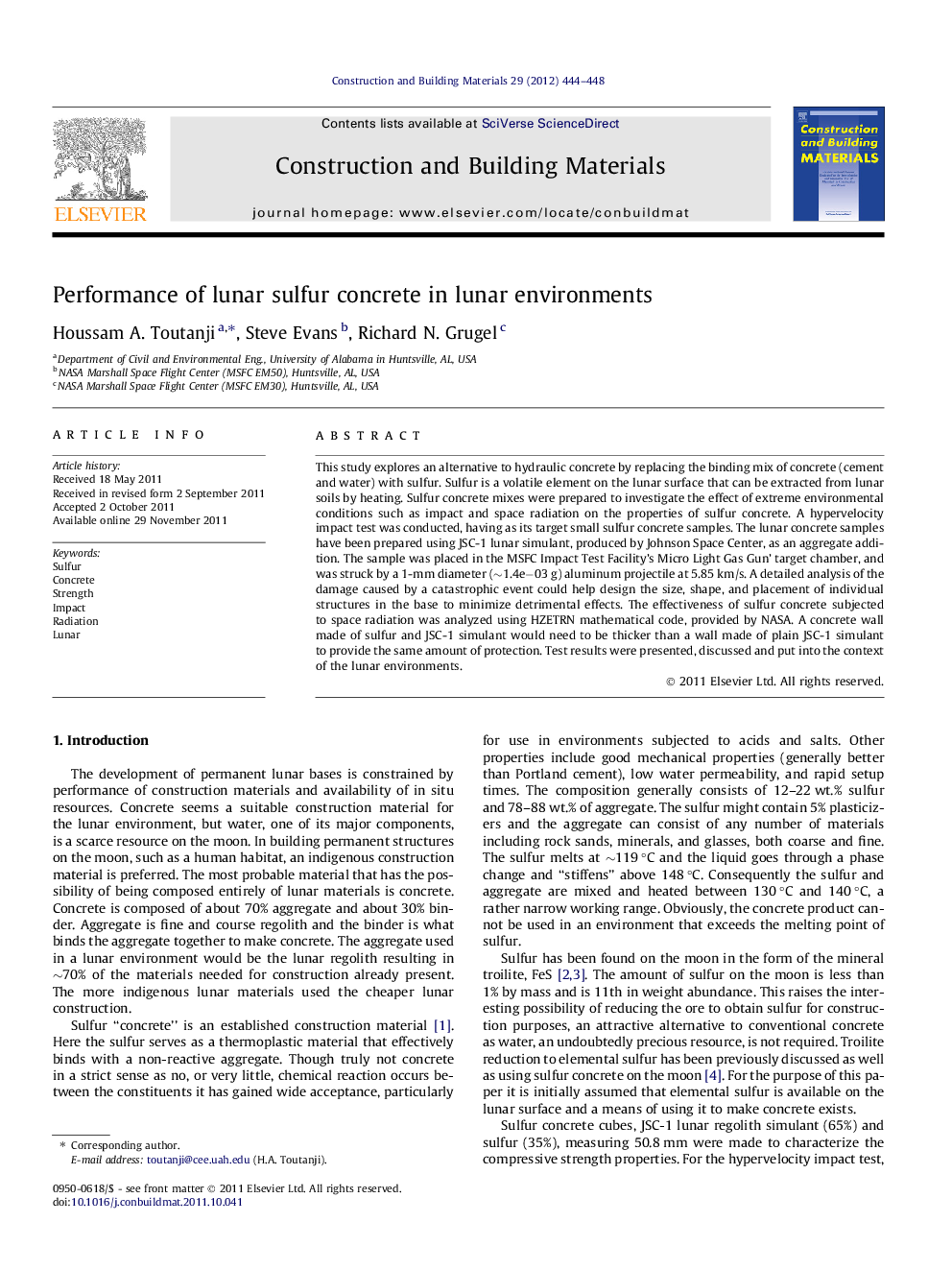| Article ID | Journal | Published Year | Pages | File Type |
|---|---|---|---|---|
| 259090 | Construction and Building Materials | 2012 | 5 Pages |
This study explores an alternative to hydraulic concrete by replacing the binding mix of concrete (cement and water) with sulfur. Sulfur is a volatile element on the lunar surface that can be extracted from lunar soils by heating. Sulfur concrete mixes were prepared to investigate the effect of extreme environmental conditions such as impact and space radiation on the properties of sulfur concrete. A hypervelocity impact test was conducted, having as its target small sulfur concrete samples. The lunar concrete samples have been prepared using JSC-1 lunar simulant, produced by Johnson Space Center, as an aggregate addition. The sample was placed in the MSFC Impact Test Facility’s Micro Light Gas Gun’ target chamber, and was struck by a 1-mm diameter (∼1.4e−03 g) aluminum projectile at 5.85 km/s. A detailed analysis of the damage caused by a catastrophic event could help design the size, shape, and placement of individual structures in the base to minimize detrimental effects. The effectiveness of sulfur concrete subjected to space radiation was analyzed using HZETRN mathematical code, provided by NASA. A concrete wall made of sulfur and JSC-1 simulant would need to be thicker than a wall made of plain JSC-1 simulant to provide the same amount of protection. Test results were presented, discussed and put into the context of the lunar environments.
▸ We replaced hydraulic concrete binder (cement and water) with sulfur binder. ▸ The effect of extreme conditions on the properties of sulfur concrete was investigated. ▸ Sulfur concrete exhibits better compressive strengths than Portland cement concrete. ▸ The hypervelocity model predicts the crater size that produced by the experimental test. ▸ The addition of a small amount of polyethylene seems to decrease the radiation dose.
